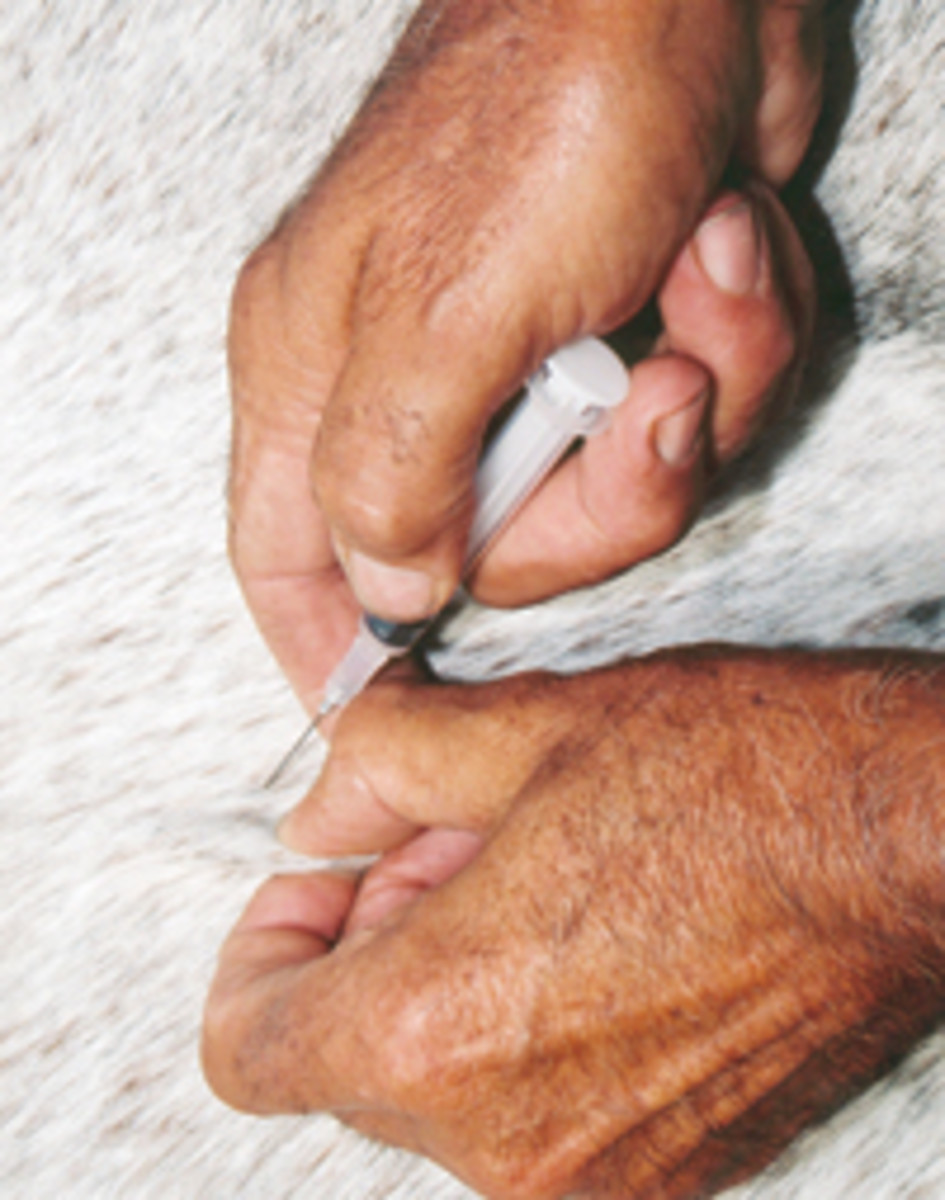
In the course of maintaining a horse we sometimes have to administer medications, whether it be a routine procedure such as deworming and vaccinations, or a remedial medication for an ailment. I would like to comment in this issue on my opinions on both routes of administration, if there’s a choice, and basic approaches that make the task easier on both you and your horse. Drugs can be administered as simply as adding them to grain, giving an oral paste, intramuscular injection or intravenous injection. If you have a choice, I always recommend the least invasive route of administering a drug.
For instance, anti-inflammatory drugs such as phenylbutazone (Bute) or flunexin (Banamine) can be given orally or intravenously. I feel there are no advantages to administering these drugs intravenously, but there are potential problems with injecting them.
While these drugs are anti-inflammatory when metabolized to their active state in the horse’s system, they are, in themselves, irritating when injected into a horse’s tissue.
I’m aware of people occasionally using these drugs intramuscularly instead of attempting the intravenous route. I would plead with you not to administer these drugs in this manner. It often results in a painful swelling at the injection site, and if bacteria are introduced into this environment with the shot, serious infection can result.
The critical factor besides choosing the route of administration is the approach and technique used to administer the medication. Always take your time in your approach when conditioning your horse to accept taking medication.
If approached properly, horses become easier to medicate with time. If you try to go fast and “beat the horse to the punch,” you can create a horse that’s dangerous and nearly impossible to medicate.
It’s all a form of conditioning, so the procedure is not a threat to the horse. I prefer to treat horses in a confined area, such as a stall or small pen. This setting isn’t meant to “trap” the horse, but merely reduces the option of the normal “fight or flight” tendencies that horses evolved with.
You still must get the horse’s confidence and not make the episode threatening. Horses have a very strong memory, and associative faculties regarding negative experiences.
Whether it be administering medication orally or by injection, such as routine vaccinations, the procedure should never escalate to a high level of threat or tension. Introduce yourself and your intentions in a calm manner, and respect your horse’s response. With time and experience, you can learn when the horse is telling you he’s ready to rebel or revolt. Slow down and use a little “advance and retreat” technique until you’ve reached your end. Then calmly reward or reassure the horse when you’re done.
Regarding injections, I believe your horse deserves a new, sterile needle each time a shot is given. Doctoring cattle is different, and needles are used over and over. But it’s my observation that horses are more susceptible to infections or reactions from non-sterile needles.
Another advantage to using a new needle for every shot is that it’ll slip through the skin with less resistance and therefore cause less emotional reaction in the horse. I also recommend using the smallest sized needle possible to give a shot. A lot of commercial vaccines come with a 20-gauge needle. I prefer a 22-gauge needle, which is smaller
in diameter.










